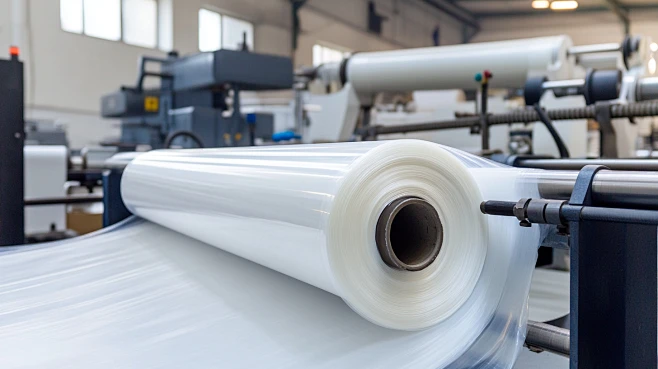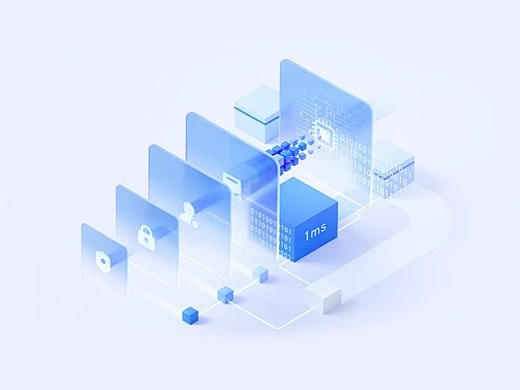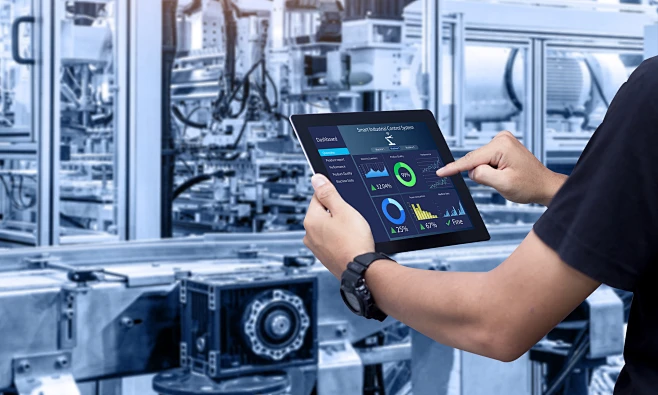21
2025
-
08
Digital Transformation of the Thin Film Industry
Author:
Chinafilm Group
1. Introduction
As the global manufacturing industry accelerates towards intelligence, greenness, and high quality, traditional industries face immense pressure for structural adjustment and transformation. The film industry, as an important component of polymer material manufacturing, is widely used in packaging, new energy, electronics, medical, agriculture, and other fields. Its development level directly affects the performance, efficiency, and environmental indicators of the downstream industrial chain. However, the traditional film manufacturing industry generally faces issues such as low automation, opaque production processes, low resource utilization, and quality management relying on manual labor, making it difficult to meet the modern industrial chain's requirements for rapid response, precise manufacturing, and green development.
Digital transformation has injected new momentum into the film industry. By empowering production manufacturing, supply chain management, product design, quality control, and equipment operation and maintenance through information technology and intelligence, companies can significantly improve operational efficiency, product quality, and customer response speed, reduce energy consumption and costs, thus gaining a competitive edge in the fierce market.
This article will systematically analyze the necessity of digital transformation in the film industry, share key technological paths and implementation strategies, dissect the challenges and response mechanisms faced during the transformation process, and reveal the actual effects and future trends of digital empowerment through typical industry cases.
2. The Necessity and Reality of Digital Transformation

2.1 Traditional Pain Points in the Film Industry
- Complex processes, reliance on experience The variety of film products (such as BOPP, CPP, PET, PVC, PE, etc.) leads to complex production parameters for various functional films, which are easily affected by manual operations, raw material fluctuations, and other factors, resulting in unstable quality.
- Information silos in processes Many small and medium-sized enterprises still remain in the "man monitoring machine" mode, lacking a unified information collection and analysis system, with data from equipment, processes, warehousing, sales, etc., scattered across different systems, forming a "silo-style" management.
- Low energy efficiency and severe waste High energy consumption and high raw material loss are common problems in the industry, and data deficiencies make it difficult for management to make scientific judgments and continuous optimizations.
- Personalized customer demands and tight delivery times Faced with the trend of diverse, small-batch, and customized demands from downstream customers, traditional production planning and response mechanisms appear sluggish.
2.2 Era-Driven Digital Transformation
- Policy guidance China's "14th Five-Year Plan" clearly proposes to "promote the digital transformation of manufacturing," "build smart factories," and "enhance the capabilities of small and medium-sized enterprises through industrial internet empowerment."
- Technological maturity The rapid development of technologies such as Industrial Internet of Things (IIoT), 5G, artificial intelligence, cloud computing, big data, and edge computing provides a technological foundation for digital transformation.
- Market pressure The increasing demand from downstream for high-quality, high-consistency, and transparent traceable packaging materials forces film companies to improve their digital management levels to meet supply chain collaboration.
3. Core Paths and Key Technologies of Digital Transformation
3.1 Building Intelligent Manufacturing Systems
3.1.1 Digital Access of Equipment and IoT Perception
Real-time collection of key process nodes such as extrusion, traction, cooling, corona treatment, and winding through sensors, PLC, and DCS systems:
- Parameters such as temperature, pressure, stretch ratio, tension, line speed, and thickness uniformity;
- Equipment status monitoring: operating time, fault warnings, energy consumption, etc.;
- Forming a unified edge data collection platform to connect "things" and "data."

3.1.2 MES System Construction
Manufacturing Execution System (MES) is the core platform for achieving "plan-execute-monitor-feedback" closed-loop management:
- Achieving order-driven lean scheduling;
- Process control and traceability;
- Material tracking, process formula management;
- Digitalization of operational performance and quality indicators.
The MES system connects ERP and equipment layers, building a data bridge between management and execution.
3.1.3 Digital Twin and Smart Factory
Using digital twin technology to build a "virtual factory" that maps the production site in real-time:
- Visual display of equipment status, production progress, and energy consumption curves;
- Optimizing production plans based on simulation and deduction;
- Combining with AI algorithms to achieve predictive maintenance and quality forecasting.
3.2 Intelligent Quality Control and Data-Driven Process Optimization
- Online detection systems Infrared thickness measurement, machine vision detection, real-time monitoring of tension/tension fluctuations, improving quality consistency;
- SPC Statistical Process Control Automatically identifying abnormal fluctuations and trend deviations;
- AI algorithms identify the correlation between defect causes and process deviations. ;
- Quality big data modeling Establishing a multi-dimensional data model of "formula-process-equipment-product" to guide optimization in reverse.

3.3 Digital Supply Chain Collaboration
- WMS Warehouse Management System Achieving barcoding, visualization, intelligent positioning, and FIFO management of raw materials, semi-finished products, and finished products;
- APS Advanced Planning and Scheduling System Connecting orders, materials, equipment, and labor to achieve balanced production capacity;
- Connecting with customer systems Real-time sharing of order status, inventory situation, and delivery times, improving supply chain transparency and response speed;
- Logistics system integration The entire process from shipment to customer receipt is traceable.

3.4 Energy Management and Carbon Footprint Analysis
- Establish an energy management platform to collect and categorize energy consumption in real-time for electricity, natural gas, water, steam, and other energy sources;
- Set energy consumption KPIs and alarm mechanisms;
- Analyze energy consumption, losses, and carbon emissions per unit output;
- Support data collection required for green product certification (such as carbon footprint, LCA assessment, dual carbon declaration).
Four, Implementation Strategies for Digital Transformation in Film Enterprises

4.1 "Top-level Design + Gradual Implementation" Path
- Top-level Planning Determine digital goals, core processes, and key pain points;
- Phased Implementation Gradually expand from single-point pilots (such as online thickness detection, MES) to multi-system integration;
- Process Reengineering Sort out core processes such as production, quality, equipment, and supply chain, and optimize reconstruction in conjunction with digital systems;
- IT + OT Integration Break down the boundaries between IT (Information Technology) and OT (Operational Technology) to achieve unified data management.

4.2 Talent and Organizational Change
- Introduce cross-border talents: such as industrial software engineers, data analysts, intelligent manufacturing consultants;
- Establish a "Digital Promotion Team" to promote implementation through cross-departmental collaboration;
- Build a digital culture: encourage employees to speak with data, manage with systems, and collaborate on platforms;
- Provide system training for operators to break down resistance to new systems.


4.3 Create "Lighthouse Projects" as Demonstration Leaders
- Select a representative workshop or production line as a pilot:
- Implement digital process control, quality traceability, energy monitoring, and visual management;
- Aggregate data to form experience models;
- Form replicable and promotable standard packages to drive promotion throughout the factory.
Five, Typical Case Sharing

Case One: Digital Upgrade Path of a BOPP Film Enterprise
- Built a unified MES + ERP + WMS system;
- Introduced online thickness control + machine vision inspection;
- Collected equipment and process parameter data for analysis of fluctuation causes;
- Achieved precise order scheduling, with product defect rates decreasing by 30% and per capita output value increasing by 50%.

Case Two: Quality Data-Driven Management of a Functional Film Enterprise
- Established a multi-dimensional database for formula data, process parameters, and test results;
- Introduced machine learning models to predict product qualification rates;
- AI analysis revealed that a certain temperature control link significantly affected surface defects;
- After adjusting the process, key defects were reduced by 45%.
Six, Challenges and Solutions Faced in Transformation
Challenges | Response Strategies |
High initial investment, long ROI cycle | Phased investment + "point-to-surface" pilot mechanism |
Complex system integration, multiple data interfaces | Choose platform-based, modular, and standardized system products |
Employee resistance to new systems, unwilling to change | Strengthen training + establish incentive mechanisms + carry out participatory management |
Limited understanding and insufficient emphasis from management | Strengthen digital strategic thinking, establish a dedicated CIO or information vice president to promote overall reform |
Seven, Future Trends in Digital Transformation


7.1 Moving Towards "Smart Manufacturing 2.0"
- Transition from "automated equipment + information systems" to "intelligent collaboration + autonomous decision-making";
- Combine AI and autonomous control systems to achieve unmanned production lines;
- Move from process optimization to predictive intelligent scheduling.
7.2 Data Assetization and Intelligent Decision-Making Platform Construction
- Consolidate historical process, equipment, and quality data into the enterprise's "Industrial Knowledge Graph";
- Build an enterprise digital cockpit based on BI and AI to assist in business management decision-making;
- Explore data monetization, such as sharing quality models and external empowerment.
7.3 Emergence of Inter-Industry Collaborative Platforms
- Industry chain collaboration based on industrial internet platforms:
- Achieve data connectivity between upstream raw materials, downstream customers, and equipment suppliers;
- Form industry-level remote diagnosis, formula optimization, and carbon emission assessment platforms;
- Promote the formation of a co-built and shared "data ecosystem" in the industry.
Eight, Conclusion
The digital transformation of the film industry is a key step in the leap from traditional manufacturing to intelligent manufacturing. It is not only a technological upgrade but also a comprehensive reconstruction of management models, organizational culture, and business processes. Under the dual drive of fierce international competition and sustainable development, only by accelerating the digital process, improving operational efficiency, product quality, and customer responsiveness can film enterprises stand firm in the tide of the new era.
In the future, digital technology and film material processes will be more deeply integrated, ushering in a new era of intelligent, efficient, green, and flexible film industry.
Thin film,Industry,Digitalization
Latest News
2025-08-23
Development of the Film Industry under Environmental Protection Policies
Chinafilm Group will start from global and Chinese environmental protection policies, deeply analyze the impact of environmental policies on the development of the film industry, dissect the challenges and opportunities enterprises face during the transformation process, and explore the future trends and response paths of the film industry under the background of sustainable development.
2025-08-21
Digital Transformation of the Thin Film Industry
Chinafilm Group will analyze the necessity of digital transformation in the membrane industry, share key technological paths and implementation strategies, dissect the challenges faced during the transformation process and the response mechanisms, and reveal the actual effects and future trends of digital empowerment through typical industry cases.
2025-08-15
Special Film Market: Growth and Innovation
Chinafilm Group will comprehensively analyze the logic, technological evolution, key applications, innovation paths, and global industrial landscape of the special film market, providing a systematic reference for understanding its future development strategy.
2025-08-13
Printing and adhesive technology of label films
Chinafilm Group will systematically explore the mainstream printing processes, technological trends, and adhesive structure and control methods of label films. Combining application cases, it will present a complete picture of this seemingly small yet highly engineered material system.
2025-08-09
Label film: Small label, big effect
With the accelerating trend of digitalization, greening, and high-end packaging, the performance requirements of label films are increasing, and their application scenarios are becoming increasingly broader and more specialized. This article will systematically introduce the main types of label films and in-depth analyze their typical applications and technical adaptation strategies in different industries, allowing you to fully understand the "great role behind this small label".


